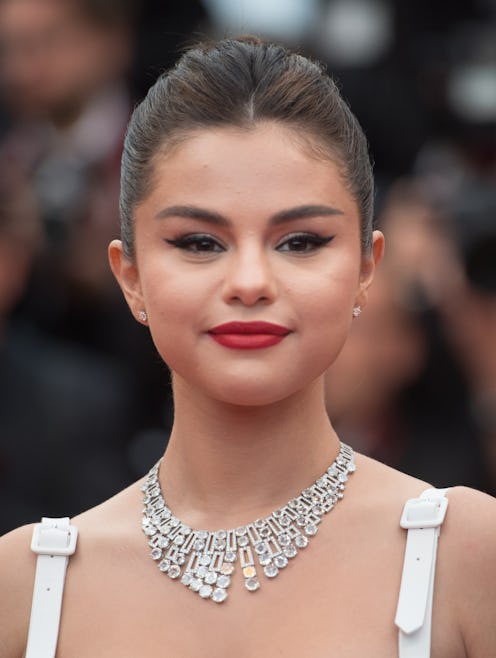Beauty
Your Guide To Finding The Perfect Red Lipstick
There’s more to the hue than meets the eye.

Body glitters come and go, eyeliner looks change with the season, but a red lip is immortal. In fact, the staple shade is believed to have been around since Cleopatra’s reign over 5,000 years ago (yes, she rocked the look). But even with thousands of years of makeup history in the rearview mirror, red lipstick shades are not as foolproof as they initially seem.
The allure of the color is so strong that you’ll find thousands upon thousands of red lipstick shades and variations on the beauty shelves. With so many choices, your likelihood of finding the one is high — but there’s a lot of digging around to do first.
This is where red lipstick’s base color, or undertone, comes into play. “Red lipsticks have four bases,” says Gregory Arlt, director of makeup artistry at M.A.C. Cosmetics. The bases are blue, orange, pink, and “clean,” aka red. “Each base will determine the color payoff of the lipstick,” he explains. And once you figure out the right base for your skin tone, there’s no going back.
To do so, Arlt says the most foolproof to determine a lipstick’s base color is to, well, try it on. If you can’t apply it to your actual lips, he notes swatching it on your inner arm will give you a good idea of how it works with your skin tone. But if you’re shopping online, you’ve got two options. The first isn’t a guarantee, but many websites and apps now offer “virtual try-on” tools that can help you visualize the color on yourself. The second option, according to Arlt, is to do some base-level Googling — read through reviews and product descriptions to see if any mentions of the base or undertone pop out.
Here, Arlt breaks down everything to know about the four classes of red lipstick shades along with the top tubes to shop for your makeup bag.
We only include products that have been independently selected by Bustle's editorial team. However, we may receive a portion of sales if you purchase a product through a link in this article.
Blue-Based Red
Blue reds have cooler and “more moody” undertones to them, Arlt explains. This means they tend to look more flattering on people with cool undertones. Your skin’s undertone, as a quick refresher, is unrelated to your melanin levels or skin shade — it’s more about the hue underneath your complexion that affects your overall appearance as well as what colors you wear well (cool undertones tend to have blue or green veins and look better in silver versus gold).
For the blue-veined, silver wearers, a blue-based red is your best match. These are deep and rich reds — think of iconic red lipsticks like M.A.C.’s Ruby Woo and Stila’s Fiery.
Orange-Based Red
Orange-based reds lean towards warm undertones (think gold jewelry, green veins), says Arlt. The orange makes the shade “bright, fiery, and dynamic,” he explains, which can make it an intimidating and thereby less common choice for many people. That said, swiping one on makes for a vibrant statement lip.
Pink-Based Red
Arlt describes this red variation as being, pink-tinged, bright, and flirty. This category of lipstick shades is also prime for cool undertoned complexions. Look to reds with hints of magenta, fuchsia, and berry.
“Clean” Red
A clean red is, somewhat redundantly, red lipstick with a red base. It’s a very red-red, and is the default setting of the color class. Arlt says it’s a no-fuss pick that can flatter all skin undertones, so go forth if you want to rock it.
Something to keep in mind? Makeup is about fun, Arlt adds, and it’s not an exact science. His tip? “If you like a color, wear it!”
This article was originally published on